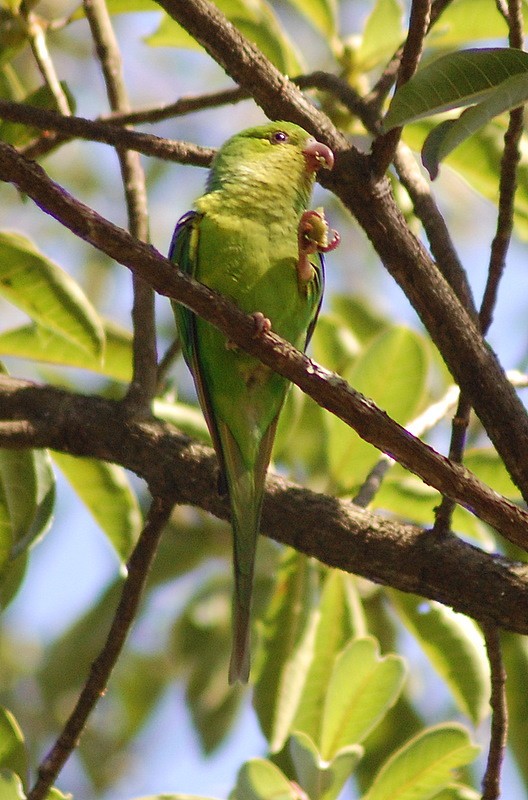Yellow-chevroned Parakeet
A species of Canary-winged Parakeets and Allies Scientific name : Brotogeris chiriri Genus : Canary-winged Parakeets and Allies
Yellow-chevroned Parakeet, A species of Canary-winged Parakeets and Allies
Botanical name: Brotogeris chiriri
Genus: Canary-winged Parakeets and Allies
Content
Description People often ask General Info
 Photo By Dario Sanches , used under CC-BY-SA-2.0 /Cropped and compressed from original
Photo By Dario Sanches , used under CC-BY-SA-2.0 /Cropped and compressed from original Description
The bird is 20–25 cm in length, and is mostly light green in color. It has a trailing yellow edge on its folded wings, which is also seen when the bird is in flight. It was considered conspecific with the white-winged parakeet until 1997. 
Size
20-23 cm (8-9 in)
Colors
Green
Yellow
Life Expectancy
19 years
Nest Placement
Cavity
Feeding Habits
Yellow-chevroned Parakeet primarily consume seeds and fruit, supplemented by blossoms and nectar in feral populations. They forage mainly in disturbed forested areas and clearings, often visiting bird feeders, and display communal roosting outside of breeding seasons.
Habitat
The yellow-chevroned Parakeet primarily thrives in open woodlands and savannas that feature a sparser tree presence. It adapts well to human-altered environments, including suburban regions with exotic flora such as palm and eucalyptus trees. These parakeets are also found in gallery forests and palm swamps, favoring open areas over dense forests. They reside at various altitudes and display seasonal habitat preferences related to food availability.
Nest Behavior
Yellow-chevroned Parakeet's nesting period usually includes laying a clutch of 4-5 eggs. The parents take turns incubating the eggs and later caring for the hatched young, ensuring warmth and protection.
Nest Characteristics
Yellow-chevroned Parakeet typically nests in tree cavities or in the spaces within palm fronds. The nest is not constructed but is an existing cavity repurposed for egg-laying. Its size and shape can vary based on the chosen cavity.
Dite type
Herbivorous
People often ask
General Info
Feeding Habits
Bird food type
Species Status
Not globally threatened.